This weekend I attended a class on using different finishing products than I was used to. A workshop held in a friendly and elegant atmosphere, where connections are made between participants - an experience to be shared. Especially as, among other things, I learned how to reinterpret furniture using techniques that are more of an artist's art.
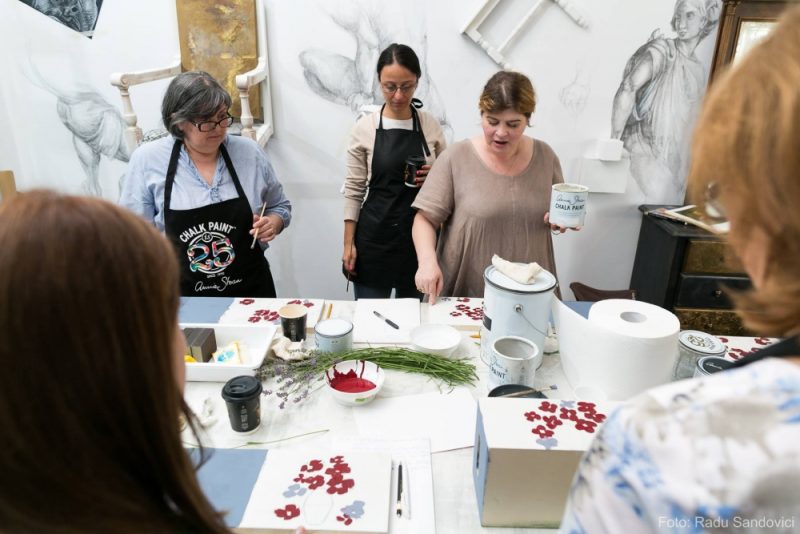
I'd known about the paints Annie Sloan thanks to my passion for artificial wood ageing, old-looking furniture and techniques. I discovered these paints also in Romania, but also a desire to share my passion for style and colour to inspire people to get creative. I was happy to learn that they organise workshops and decided to attend one of them to learn more about paints. Chalk Paint™ and application techniques.
But first, a few words about Annie Sloan and her journey from visual artist to manufacturer of paints, waxes, and other decorative house paint materials. After college, Annie worked as a decorator and wall painter, which gave her experience and a lot of knowledge about paints. In 1987 she published the book "The Complete Book of Decorative Paint Techniques" - The complete book of decorative paint techniques - which quickly became a reference in the field.
Although she tested all sorts of products to work with, she didn't find anything as versatile and easy to apply as she would have liked. That's how he came to think of his own range of paints, which was born in 1990 as Chalk Paint™. To develop the products, Annie used all the knowledge she had acquired over time about paints, colours, pigments and art history.
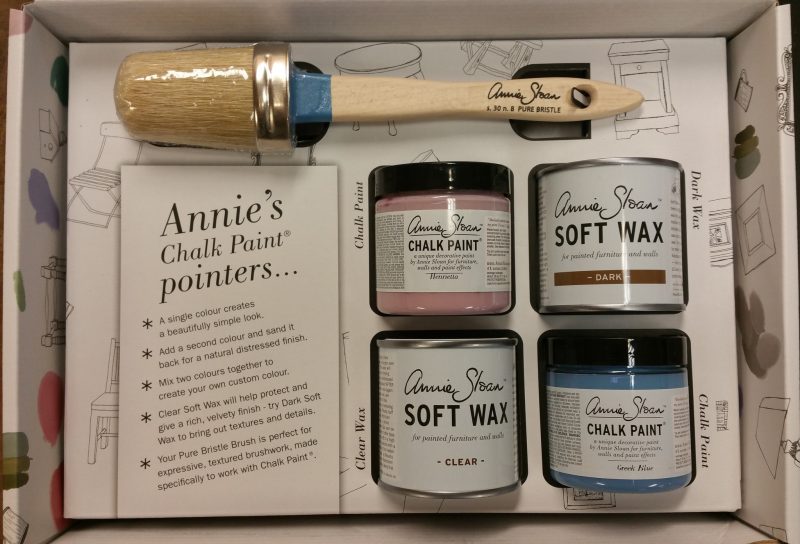
Now Annie Sloan is one of the most influential designers in the UK and beyond. Since the advent of paints she has travelled the world to present and teach paint techniques. To date there are over 1700 independent shops in over 50 countries and Annie continues to lecture and create products and techniques in her studio in Oxford, UK.
Back to Saturday's workshop. It took place at Deco Art and was supported by Nana Rădulescu, a lady full of energy and inspiration who learned her techniques directly from Annie Sloan. The theme of the workshop was "Reinterpreting furniture - Ștefan Luchian" and the surprise was the participation of Ralucă Șerban, a plastic artist who, with patience, managed to bring out the artist in each of us.
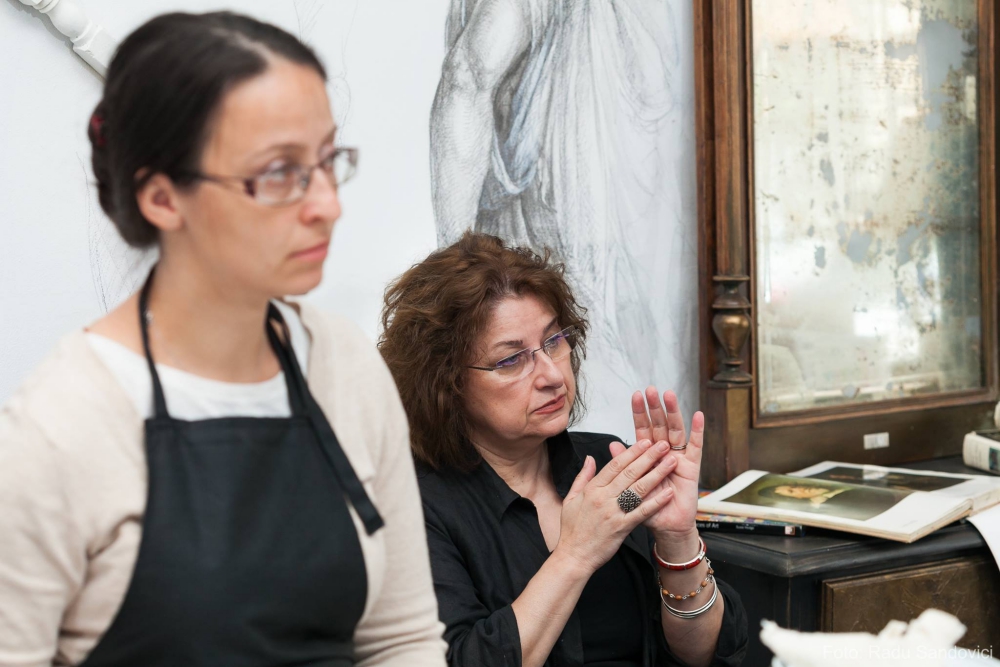
The course had two parts, linked by theme and materials.
In the first part we tested the paints and waxes, as well as the special brushes, which are also Annie Sloan creations. We saw how you can get different textures with the same paint, how you can use the paint as a patina, how you can achieve different effects on wood using wax and how easy it all is to do. We each had our own piece of wood that we tested and played around applying the paints, both with boar hair brushes made especially in Italy for Annie Sloan and plastic ones.
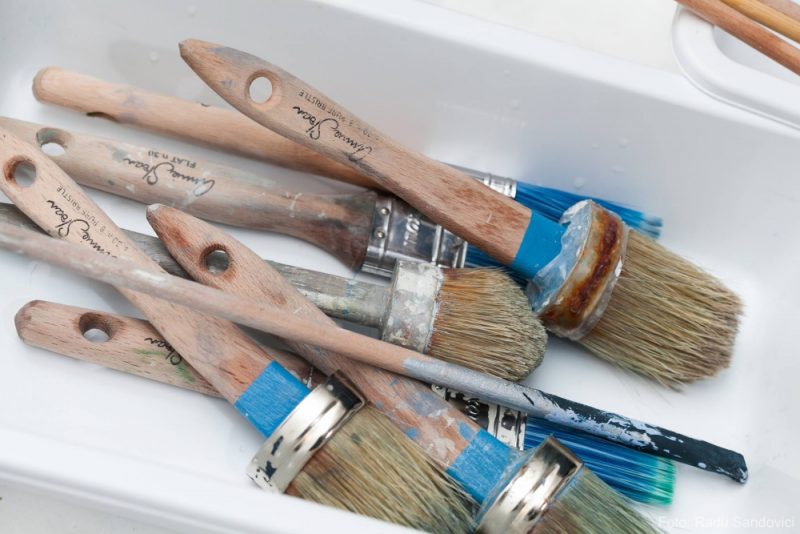
The colours chosen were from the anemone colour range, practically linking the first part of the course - the technical part - to the second, the artistic part. After the presentation of the techniques, we were surprised to discover that we could use them to paint on wood or furniture. And that wax can be used to create shadows or to outline an outline. Raluca Șerban, with real pedagogical talent, managed to make us reinterpret Luchian's anemones and believe me, it really worked (to my great surprise).
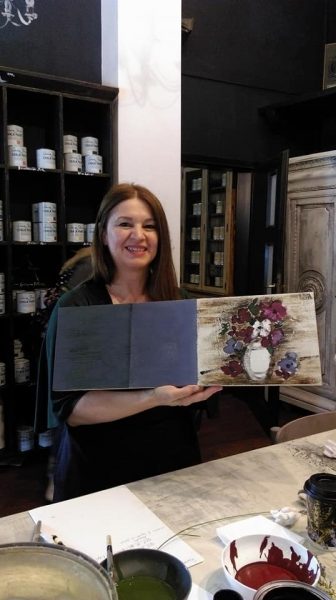
I had the pleasure of meeting a very talented lady at the workshop who has attended their other courses. Annie Sloan has developed a lot of techniques and it is impossible to teach them in one course. So, she attended several of them and became a real specialist. I have seen photos of one of her latest works, an old chair that she repainted (including the fabric, as these paints can also be used on fabric or leather). I asked her to allow me to use the photos to show you the transformation.
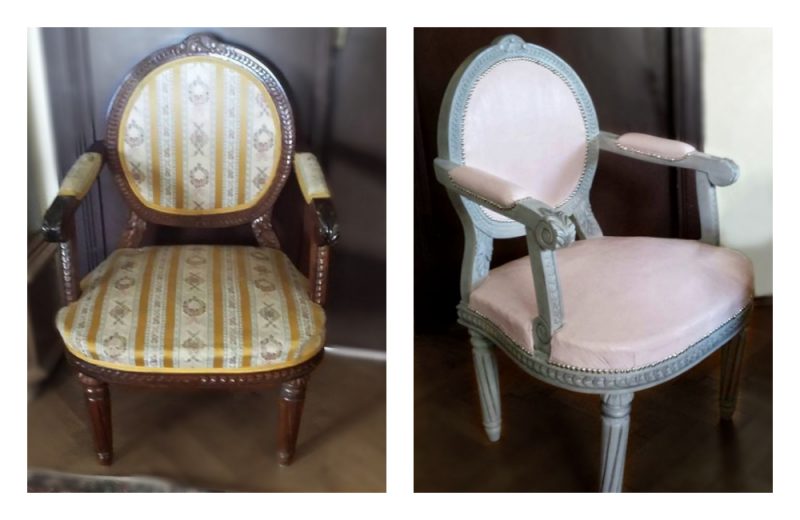
She is so passionate about paints and painting techniques that she has created a blog to showcase her work. She came to the class with a wooden box to which she applied the materials directly. On one side she painted a vase with anemones. The result was spectacular.
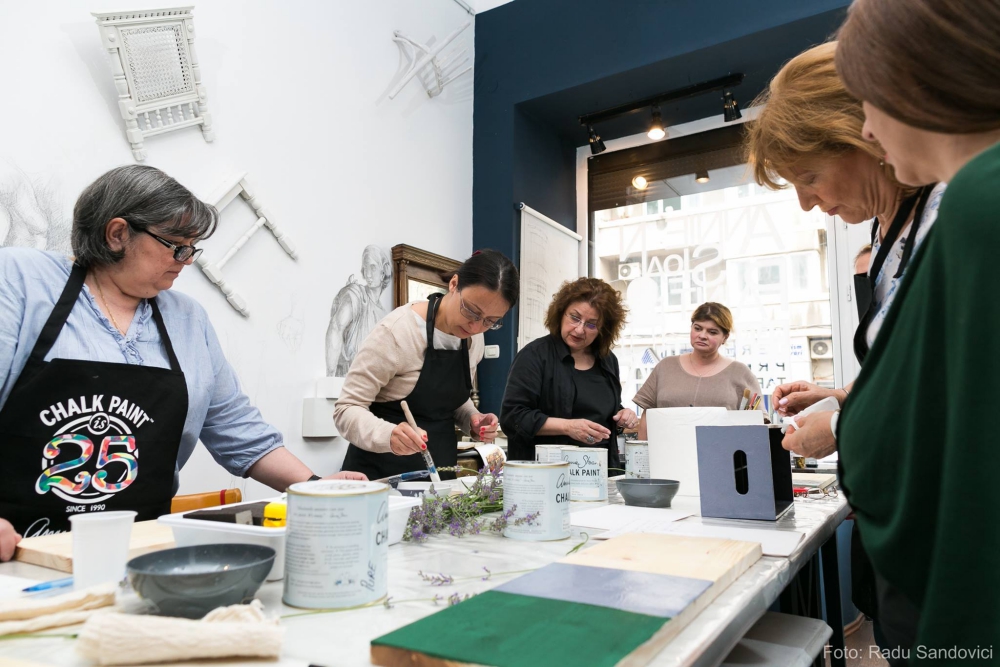
I was very excited by what can be done with these paints and waxes, how simple they can be used to redecorate, to reinterpret the furniture in the house, but also by the atmosphere during the course, by the discreet music in the background that accompanied us while we worked, by the relationship that was established between us. I'm determined to come back to learn other techniques and I'll certainly tell you about them.
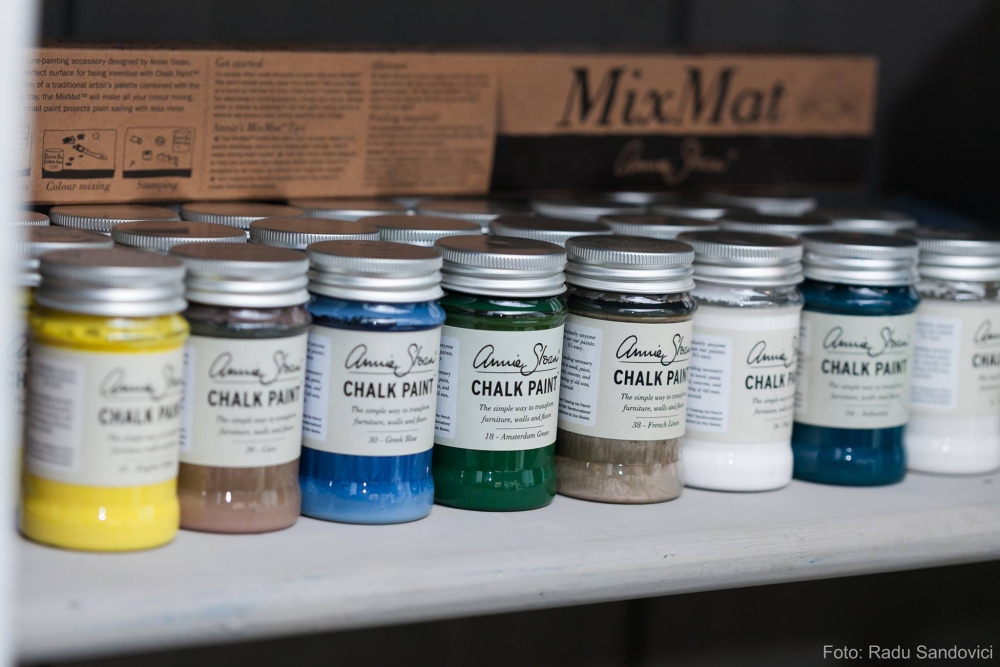























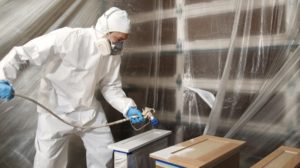
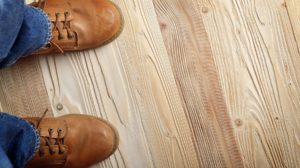
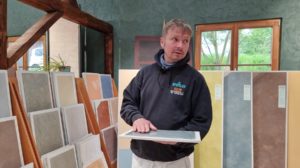
Hello.
I also read with interest this presentation of yours related to wood finishing products.
Related to Chalk Paint and the possibility of applying this product on MDF. Do the specific qualities of the paint help to apply the product directly on MDF? Or are the steps necessary to finish the MDF (polyurethane insulating layer, sanding, etc.)?
Is it a friendlier paint, easy to apply? Because this way, for a novice finisher, it can solve many problems.
Thank you.
Hello,
If finishing natural wood or MDF, a clear lacquer must be applied beforehand. Paints are applied directly to finished furniture when refurbishment or a change of appearance is desired.
The paint is easy to apply and water soluble. It's really good for a beginner because it's not problematic. But you should know that you won't be able to get furniture with mirror gloss. It's a kind of finish more for a rustic or shabby shic look. Finally protect the effect with a low gloss clear lacquer or wax.
You can find more information by clicking on the link in the article.
All the best!
Hello!
I would like to refinish some wooden chairs (lacquered) using Annie Sloan's Chalk Paint.
Before I did my research, I completely sanded one of them to remove the lake. What could I do now? Would it be ok to sand them all for an identical effect? Should they be primed before painting?
Thank you very much!
Hello!
You can achieve a similar effect if you apply 1-2 extra coats of paint to the sanded chair. The first coat is applied a little thinner to get into the wood. After drying, sand it to remove the high wood grain. Sand with fine paper - 280 or 320. Then apply the desired paint (2-3 coats) in the usual way and finally wax.
If you want to get a different kind of effect (where the bottom layer shows, for example) then you should bring them all to the same appearance and then apply the paint. After sanding apply primer only if you want to save paint. Otherwise, the paint can be applied directly to the sanded wood.
All the best!